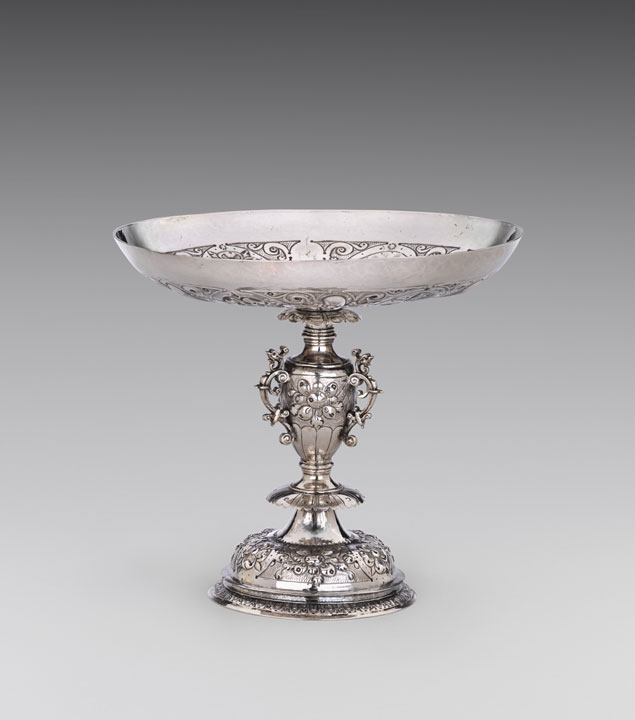National Gallery of Art Acquires Two Netherlandish Decorative Objects from the 17th Century

Dutch 17th Century
Standing Dish (Tazza), 1618
silver
National Gallery of Art, Washington
Patrons' Permanent Fund and Greg and Candy Fazakerley Fund
2023.52.1
Washington, DC—The National Gallery of Art has recently acquired two exquisite Netherlandish decorative art objects: a silver standing dish from 1618 and a large serpent-stem glass goblet from the late 17th century. Intricate works of rare materials such as these were highly sought after in Europe by wealthy individuals for their Kunstkammern, or “rooms of wonders.” The rise in popularity of these encyclopedic collections of distinctive objects, which might have included art, insect specimens, seashells, and fossils, among other things, coincided with the rise of global trade and the spread of European colonialism.
The silver dish and the glass goblet, together with a 17th-century nautilus cup that was acquired in 2023, will be displayed in gallery 50 on the Main Floor of the West Building beginning April 17, 2024.
Netherlandish 17th-Century Dutch Silver Standing Dish
The Dutch artist Willem Claesz Heda depicted this same standing dish in several of his greatest still-life paintings, including Banquet Piece with Mince Pie (1635) in the National Gallery’s collection. There are no known dishes exactly like this; it is almost certainly the same one that Heda used for his paintings. The artist was apparently drawn to the object because of the challenge it presented in capturing the effects of light reflecting off a shiny surface.
Standing dishes such as this one were mostly used for drinking wine. This is an especially lavish example, representing the heights of the silversmith’s art in Amsterdam during the first half of the 17th century. The dish includes a vase-shaped stem decorated with griffins, a domed foot with floral details, and a smoothly polished rim. The interior of the dish features a raised geometric pattern surrounded by a wide band of alternating star, flower, flute, and volute motifs that are mirrored on the dish’s exterior. Three identifying marks punched into the outside rim provide clues to the dish’s history: an H that dates the dish to 1618; three X’s with a crown, the town mark for Amsterdam; and a clover, possibly the maker’s mark of Abraham Gallus I.
Netherlandish Late 17th-century Serpent-Stem Glass Goblet
This large serpent-stem goblet reflects a style of elaborate glassmaking that originated in Venice during the Renaissance. Called façon de Venise, the style eventually spread throughout Europe. Venetian glassware was particularly prized for its brilliant clarity and imaginative designs, which pushed the limits of technology. This goblet features an elaborate stem in an intricate, twisted pattern, flanked by rippled blue glass additions. Goblets made in this style were collected beginning in the late 16th century in northern Europe and were often included in distinguished Kunstkammern, “rooms of wonders,” such as the one formed by Archduke Ferdinand II at Ambras Castle, which featured an entire section devoted to glass objects.
Contact Information
General Information
For additional press information please call or send inquiries to:
Department of Communications
National Gallery of Art
2000 South Club Drive
Landover, MD 20785
phone: (202) 842-6353
e-mail: [email protected]
Newsletters
The National Gallery also offers a broad range of newsletters for various interests. Follow this link to view the complete list.